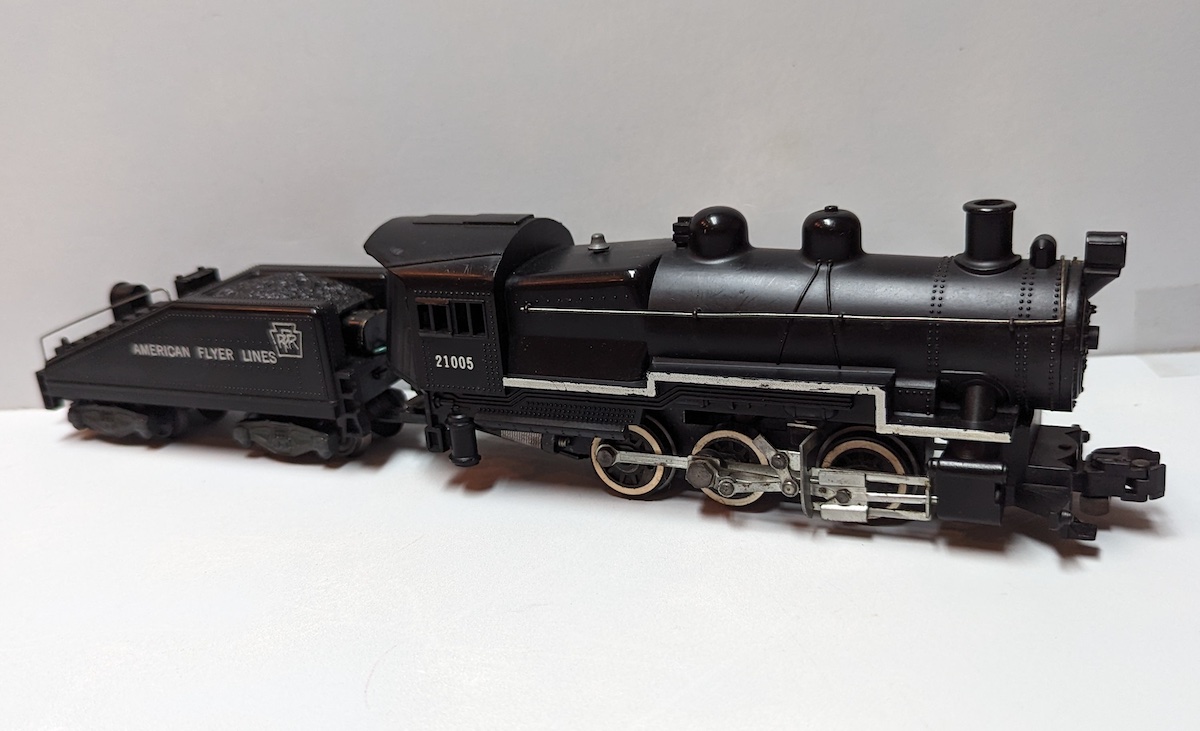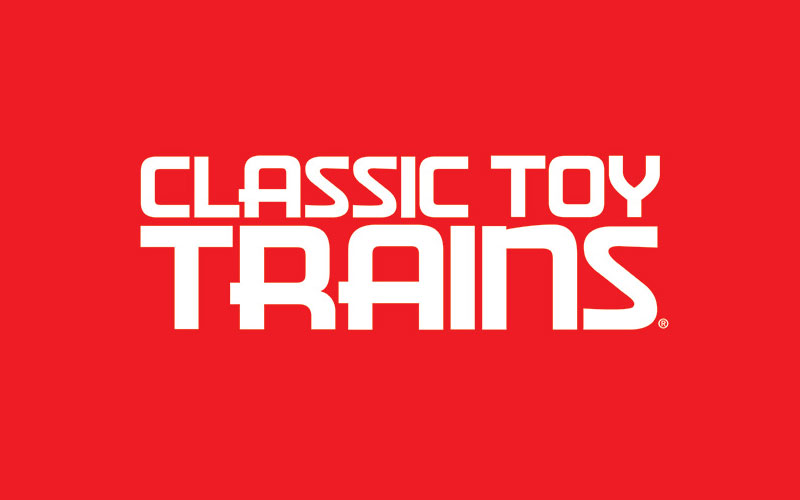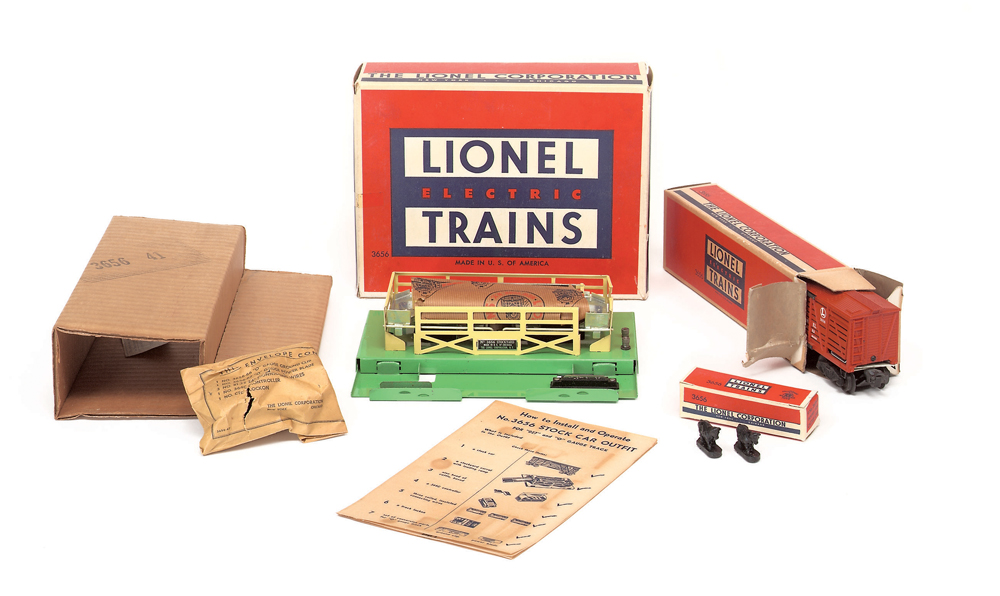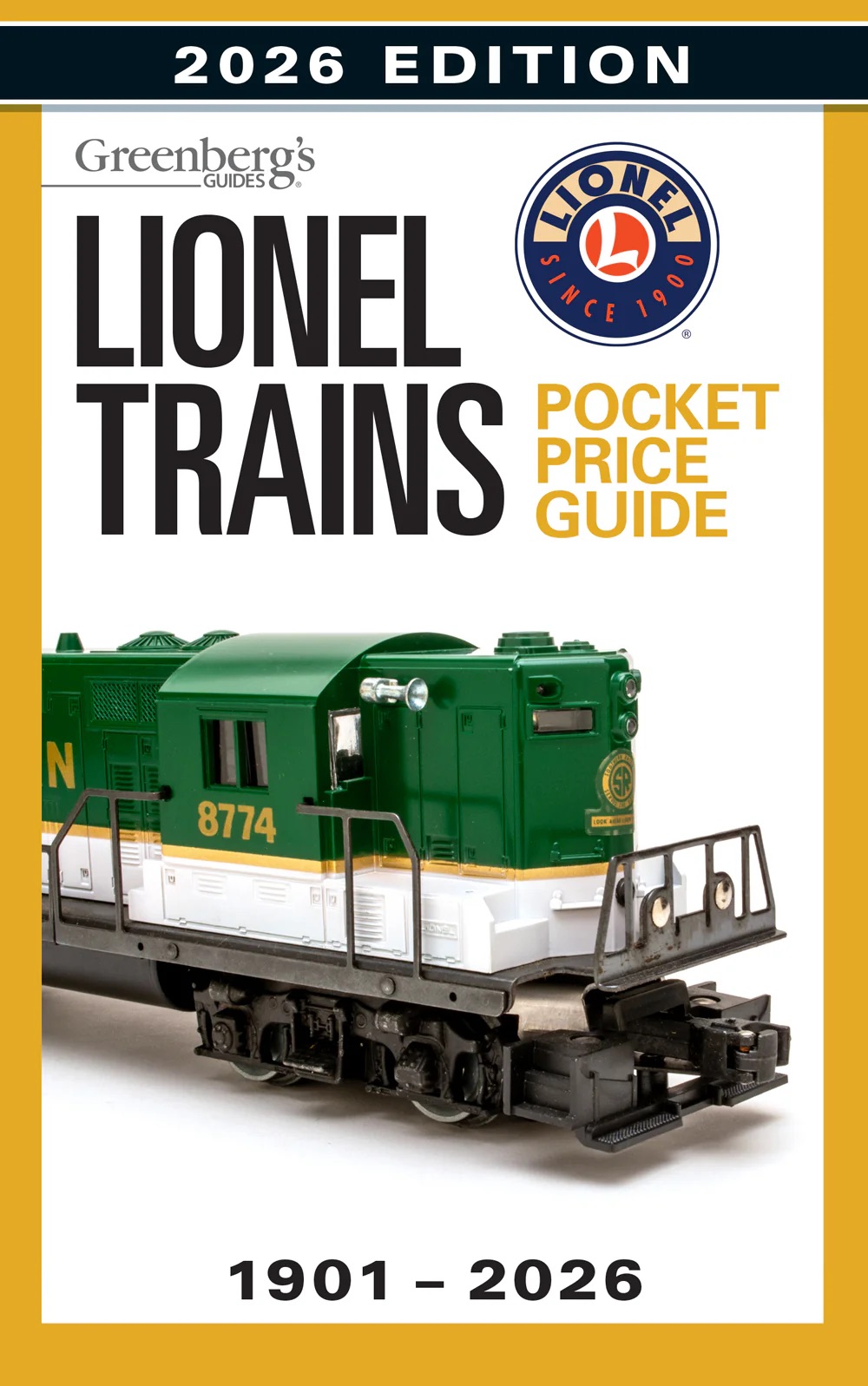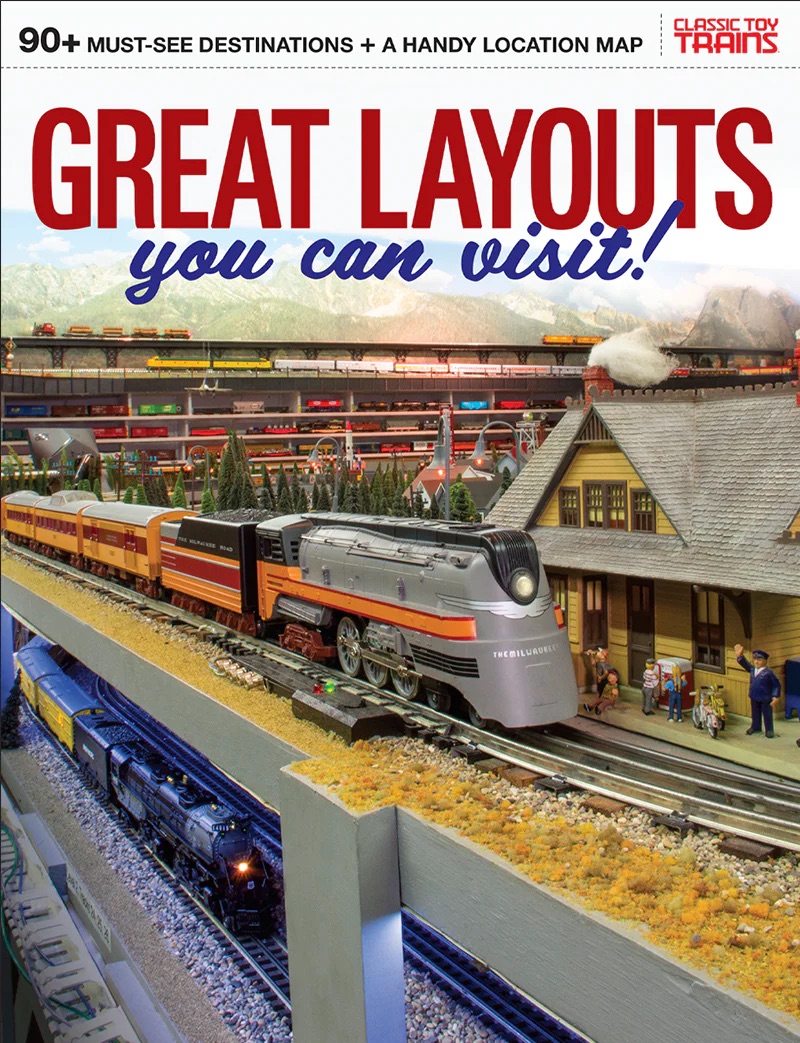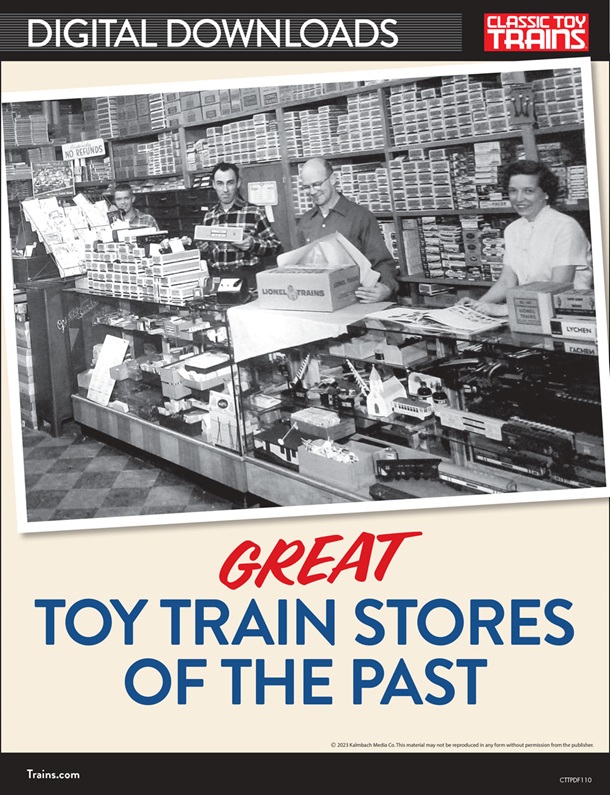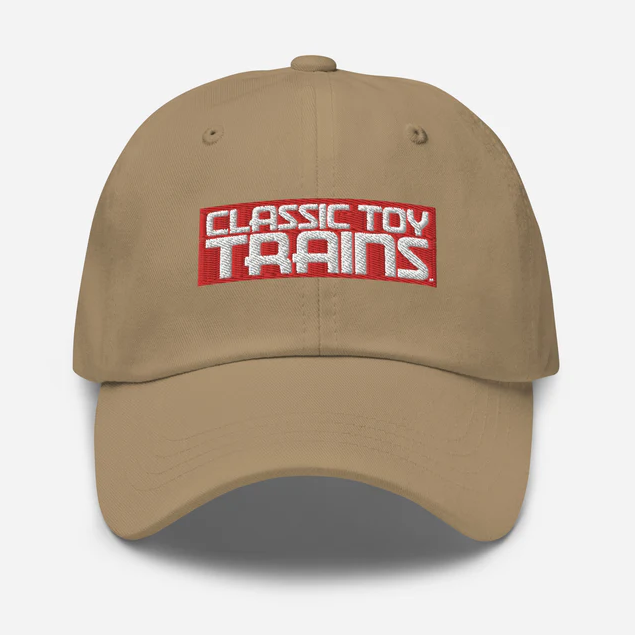American Flyer’s No. 303 Reading Lines 4-4-2 Atlantic steam engine and tender helped to inspire a young boy growing up near Chicago back in the middle 1950s to first consider how he might make railroading the essence of his career. Kevin Keefe, who would grow up to serve as a distinguished editor for Trains Magazine at Kalmbach Publishing Co. in Milwaukee, spoke fondly of the small yet mighty S gauge locomotive he received as a youngster for Christmas back in 1954 or ’55.
What it was
“My parents, Woody and Marie Keefe, surprised me that morning when I was only four years old with the finest gift I could imagine,” Kevin began.
“I wish I could recall with certainty whether it was Christmas of 1954 or ’55. I’m leaning toward the latter. However, I do know for sure that I got a Flyer steam engine and tender lettered for the Reading Lines. One thing fixed in my memory about the steamer is that the engineers designing it had made sure it had an arched cab window. Years later I learned that feature was a Reading tradition.”
The Flyer 4-4-2 Atlantic came painted matte black with white lettering. It was equipped with an operating headlight, a three-position reverse unit, a smoke mechanism, and a feature the Gilbert Co. promoted as “Choo-Choo sound.”
In addition to the locomotive, what Kevin presumed was an entire set included three freight cars, one of which was a dark red stockcar he has managed to save. At the end of the train rode a Reading-style rooftop-cupola caboose.
“My family was living in Park Forest, Ill.,” Kevin said, “the pioneering postwar planned community suburb adjacent to Chicago Heights. The nearby outdoor shopping mall, Park Forest Plaza — one of the first of its kind in the entire country— had a Sears, Roebuck & Co.; a Marshall Field’s department store; and a Goldblatt’s store. I’d bet the Flyer set came from one of them.”
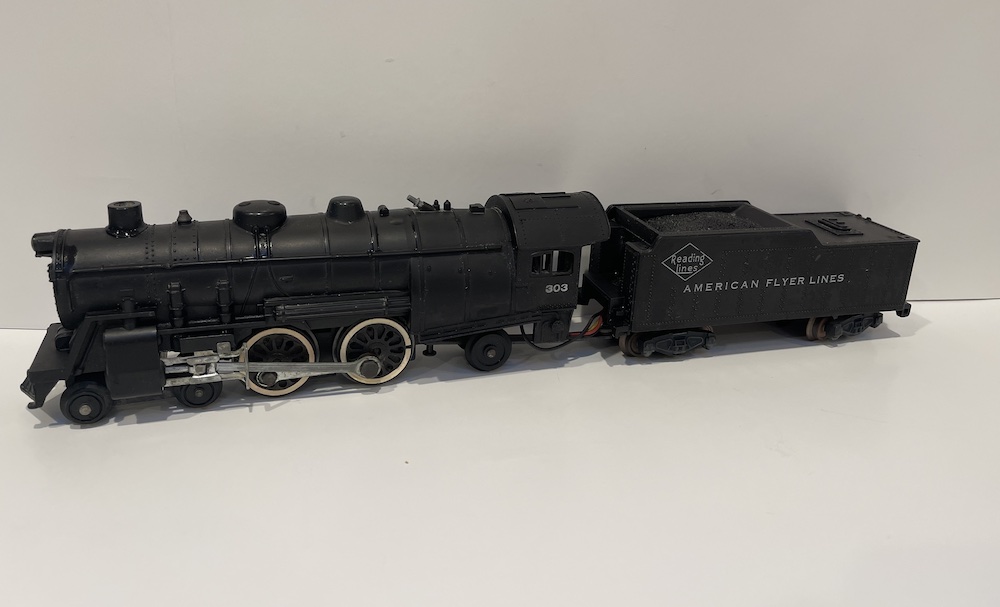
Maybe the best part, Kevin went on, was the fact that the train came with a 4 x 8-foot sheet of plywood someone (probably his father) had neatly painted green with a couple of black streets running across it before laying down a loop of S gauge track. There was enough space for a few buildings, including a depot and a gasoline station from the Plasticville U.S.A. line marketed by Bachmann Bros.
Why he loves it

What made — and still makes — the middle-of-the-line locomotive so special to Kevin? “This gift was a thrill for me. My nascent love of trains had obviously made an impression on my parents, and to have the interest rewarded with my own electric toy train was pretty heady stuff for a four-year-old.
“Plus, as every kid with an American Flyer train realized, the track had two rails unlike the toy-like three-rail track Lionel used. So, my train was much more like the real thing, and I was already pretty fixated on full-size railroading — as my parents must have realized by the time they bought the Flyer set for me.
“My fascination stemmed in part from living near the main line of the Elgin, Joliet & Eastern RR, the US Steel-owned railroad called ‘The Chicago Outer Belt,’ because it looped around Chicago from Gary, Ind., via Joliet up to Waukegan, Ill. Whenever we drove around in the family Ford, I hoped to catch a glimpse of orange EJ&E diesels running along U.S. 30 on the north edge of town.
“Other family trips got me hooked on the Chicago & Eastern Illinois RR, for which my grandfather and great-grandfather had worked. So I was already a budding railfan when I got the American Flyer set. But having that train running around in circles on the living-room floor helped crystallize my interest in trains, and we later found a semi-permanent place to set up the layout in the basement.”
Kevin concluded by pointing out how his interest in S gauge and later HO scale trains would eventually decline once he reached adolescence. As he put it, “I was destined to become a railfan and not a modeler. But that American Flyer set remains a primary influence, and I’m happy to report I still have that Atlantic.”






